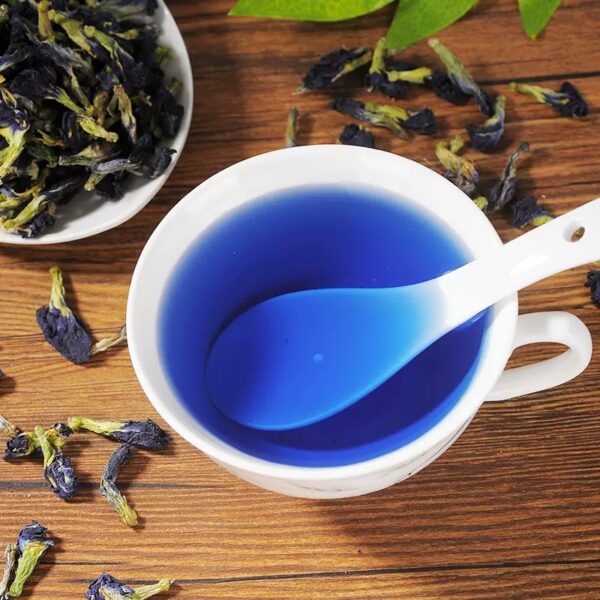
# Blue Tea: Exploring Its Origins and Health Benefits
## The Mystique of Blue Tea
Blue tea, also known as butterfly pea flower tea, has been captivating tea enthusiasts around the world with its vibrant azure hue and unique properties. This naturally caffeine-free herbal infusion has roots in Southeast Asian traditional medicine and has recently gained global popularity as both a wellness drink and a visually stunning beverage.
## Origins and Cultural Significance
The butterfly pea plant (Clitoria ternatea) is native to tropical regions of Southeast Asia, particularly Thailand, Malaysia, and Vietnam. For centuries, these vibrant blue flowers have been used in:
– Traditional Ayurvedic medicine
– Culinary applications as natural food coloring
– Religious ceremonies in some cultures
– Beauty treatments for hair and skin
In Thailand, the tea is known as “nam dok anchan” and has been consumed for generations, not just for its health benefits but also for its ceremonial significance in certain rituals.
## The Science Behind the Color
What makes blue tea truly remarkable is its natural pigmentation. The flowers contain anthocyanins, powerful antioxidants that give the tea its distinctive blue color. When exposed to changes in pH (by adding lemon juice, for example), the tea magically transforms from blue to purple or even pink, making it a favorite for mixologists and culinary artists.
## Health Benefits of Blue Tea
Research has shown that blue tea offers numerous potential health benefits:
### 1. Rich in Antioxidants
The anthocyanins in butterfly pea flowers help combat oxidative stress in the body, potentially reducing the risk of chronic diseases and slowing the aging process.
### 2. Cognitive Enhancement
Traditional medicine practitioners have long used blue tea to boost memory and brain function. Modern studies suggest it may help improve acetylcholine levels, which are crucial for learning and memory.
### 3. Stress Relief and Relaxation
Unlike traditional teas, blue tea is naturally caffeine-free, making it an excellent choice for evening relaxation. Its calming properties may help reduce anxiety and promote better sleep.
### 4. Eye Health Support
The antioxidants in blue tea, particularly proanthocyanidins, may help improve blood circulation to the eyes and protect against glaucoma and retinal damage.
### 5. Anti-inflammatory Properties
Regular consumption may help reduce inflammation throughout the body, potentially benefiting those with arthritis or other inflammatory conditions.
Keyword: blue tea
## How to Prepare Blue Tea
Brewing the perfect cup of blue tea is simple:
1. Use 5-7 dried butterfly pea flowers per cup
2. Steep in hot water (about 200°F or 93°C) for 5-7 minutes
3. Watch as the water transforms into a deep blue hue
4. Add honey or lemon to taste (note the color change with lemon!)
For a refreshing iced version, allow the tea to cool and serve over ice with a slice of citrus.
## Culinary Uses Beyond Tea
Blue tea’s versatility extends far beyond traditional brewing:
– Natural food coloring for rice, desserts, and cocktails
– Base for lattes and other creative beverages
– Ingredient in smoothies and health tonics
– Component in beauty products like soaps and shampoos
## Sustainability and Availability
As demand grows, many farmers in Southeast Asia are cultivating butterfly pea flowers sustainably. The plant is relatively easy to grow, requiring minimal pesticides, making it an environmentally friendly crop. Dried flowers and tea bags are now widely available in health food stores and online markets worldwide.
## Final Thoughts
Blue tea represents a perfect marriage of tradition and modern wellness trends. Its stunning visual appeal, coupled with potential health benefits, makes it a standout among herbal infusions. Whether you’re drawn to its color-changing properties, its health potential, or simply its mild, earthy flavor, blue tea offers a unique experience that bridges the gap between ancient wisdom and contemporary health consciousness.